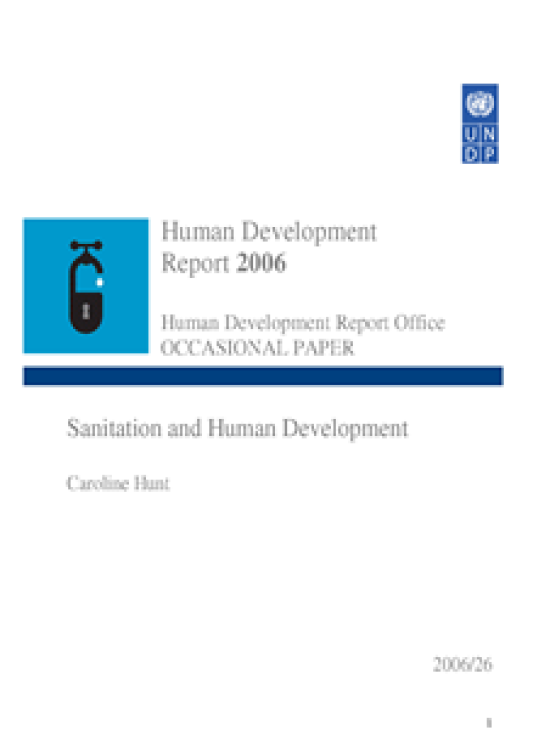Sanitation and Human Development

Download Report by Language
Document
huntcaroline.pdf
(175.84 KB)
Citation
Hunt, Caroline. 2006. Sanitation and Human Development. New York.
Sanitation and Human Development
Posted on: January 01, 2006
Sanitation is the safe disposal of human excreta and is a basic human need. At present more than two billion people worldwide lack access to improved sanitation. Most live in Asia and Sub-Saharan Africa. The sanitation coverage for Sub-Saharan African is just 36%. In some countries, such as Ethiopia, less than one in every ten people have access to sanitation. At the beginning of the twenty-first century this situation is shocking. Since the 2000 United Nations Summit, efforts have been underway to work towards the United Nations Millennium Development Goals (MDGs). The sanitation goal is to halve the proportion of those unserved by unimproved sanitation by 2015. For sanitation, this means an estimated 560 existing urban dwellers and around 2 billion rural dwellers need access to improved sanitation, without allowing for the increase in population by that time. Lacking access to sanitation is associated with severe health risks. Diarrhoeal disease kills more than two million people every year. Most of them are children under the age of five. The burden of worm infections (intestinal helminths), with the most intense infections in children, is debilitating, causes anaemia and can stunt growth.

